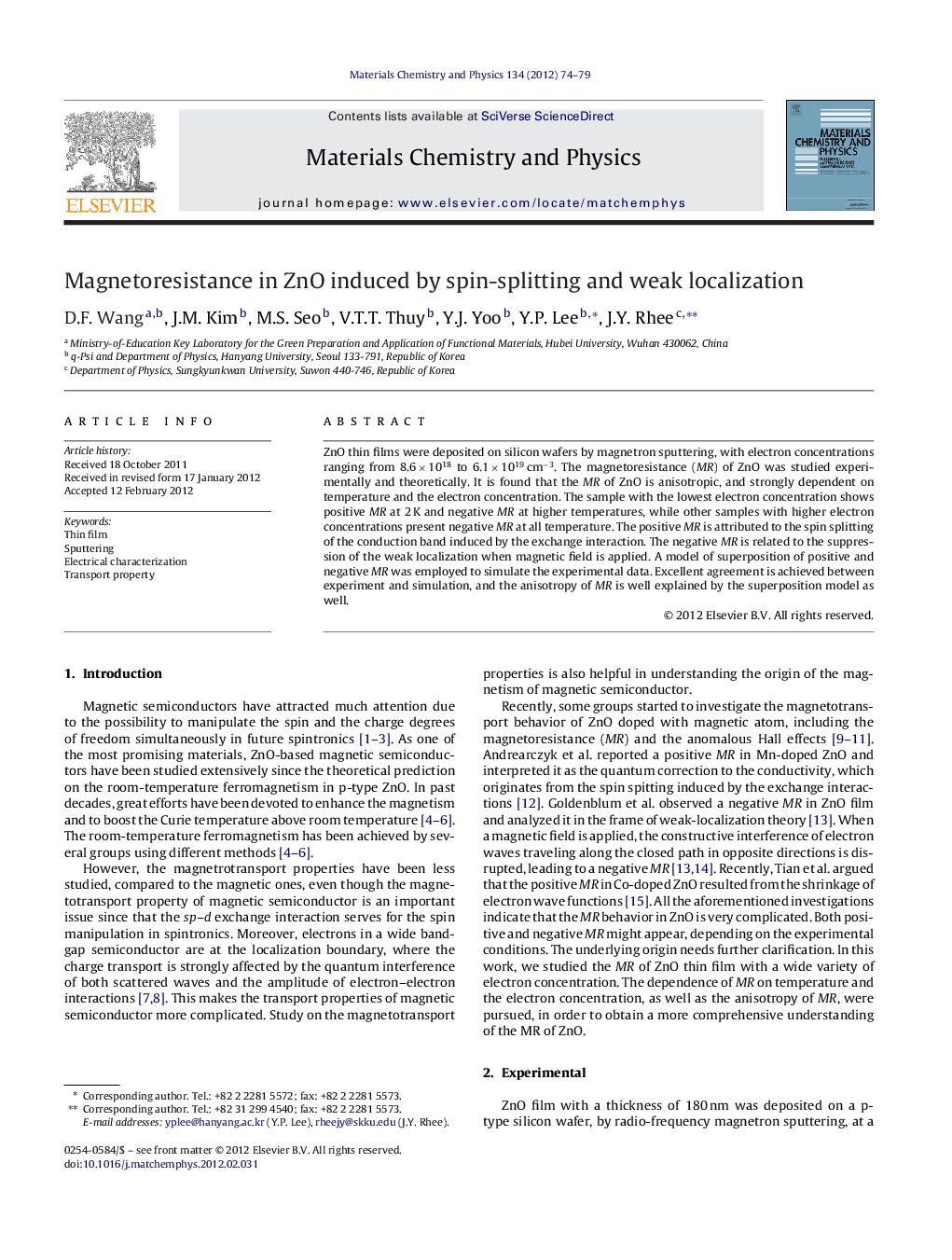| Article ID | Journal | Published Year | Pages | File Type |
|---|---|---|---|---|
| 1523983 | Materials Chemistry and Physics | 2012 | 6 Pages |
ZnO thin films were deposited on silicon wafers by magnetron sputtering, with electron concentrations ranging from 8.6 × 1018 to 6.1 × 1019 cm−3. The magnetoresistance (MR) of ZnO was studied experimentally and theoretically. It is found that the MR of ZnO is anisotropic, and strongly dependent on temperature and the electron concentration. The sample with the lowest electron concentration shows positive MR at 2 K and negative MR at higher temperatures, while other samples with higher electron concentrations present negative MR at all temperature. The positive MR is attributed to the spin splitting of the conduction band induced by the exchange interaction. The negative MR is related to the suppression of the weak localization when magnetic field is applied. A model of superposition of positive and negative MR was employed to simulate the experimental data. Excellent agreement is achieved between experiment and simulation, and the anisotropy of MR is well explained by the superposition model as well.
► We prepared ZnO thin films with different electron concentrations. ► The magnetoresistance of ZnO thin films are measured. ► We investigate the magnetoresistance of ZnO experimentally and theoretically.
